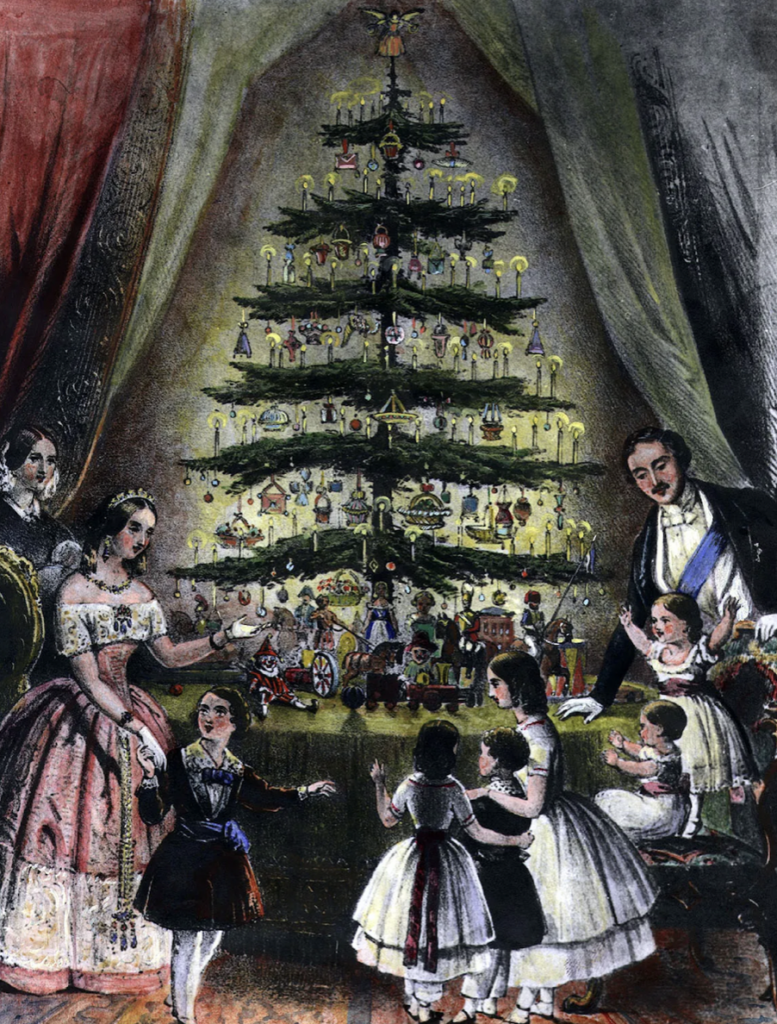
By Amelia Jewett ‘27
As December finally rolls around, many families are making their annual trip to the Christmas tree farms scattered throughout the North Shore. They will search for the perfect tree, wrap it up, stick it on the top of their car, and drive it home to begin festivities. Decorating the tree is such a significant tradition for many as we reminisce on old ornaments and play carols all while stringing lights up on the tree. A Christmas tree is a symbol of the holiday season, joy, and gift giving. But have you ever wondered how this routine came about?
All things considered, it can be quite a hassle to go out, cut down and pay for a tree to then just watch it slowly die over the next month in your living room (which is why fake trees have become so popular). So then how has it become such a staple of the holiday season?
Well, it all began in Germany in the 14th and 15th centuries when people would decorate evergreen boughs with apples for “miracle plays” in churches on December 24th. Around the holidays in the 1600s, people would buy small trees from the market and decorate them with apples, similar to this old tradition. The decoration of trees developed as the century went on and people used bits of evergreen around the house, hanging nuts, paper, and apples from them.
In the 1800s the idea of Christmas trees spread from Germany to the rest of Europe and North America, and from there, people moved away from tabletop sized trees to floor to ceiling trees we are accustomed to today. Ornaments, mainly made out of glass, were introduced, along with artificial trees. The first Christmas tree farm was started in 1901 to help preserve forests, and from there, the iconic symbol of the holiday has only grown. Today, around 25-30 million real Christmas trees are sold in the U.S. So next time you find yourself staring at the twinkling lights in your house, take a moment to appreciate the rich history behind such a wonderful holiday tradition.
Image credit: Hulton Archive


